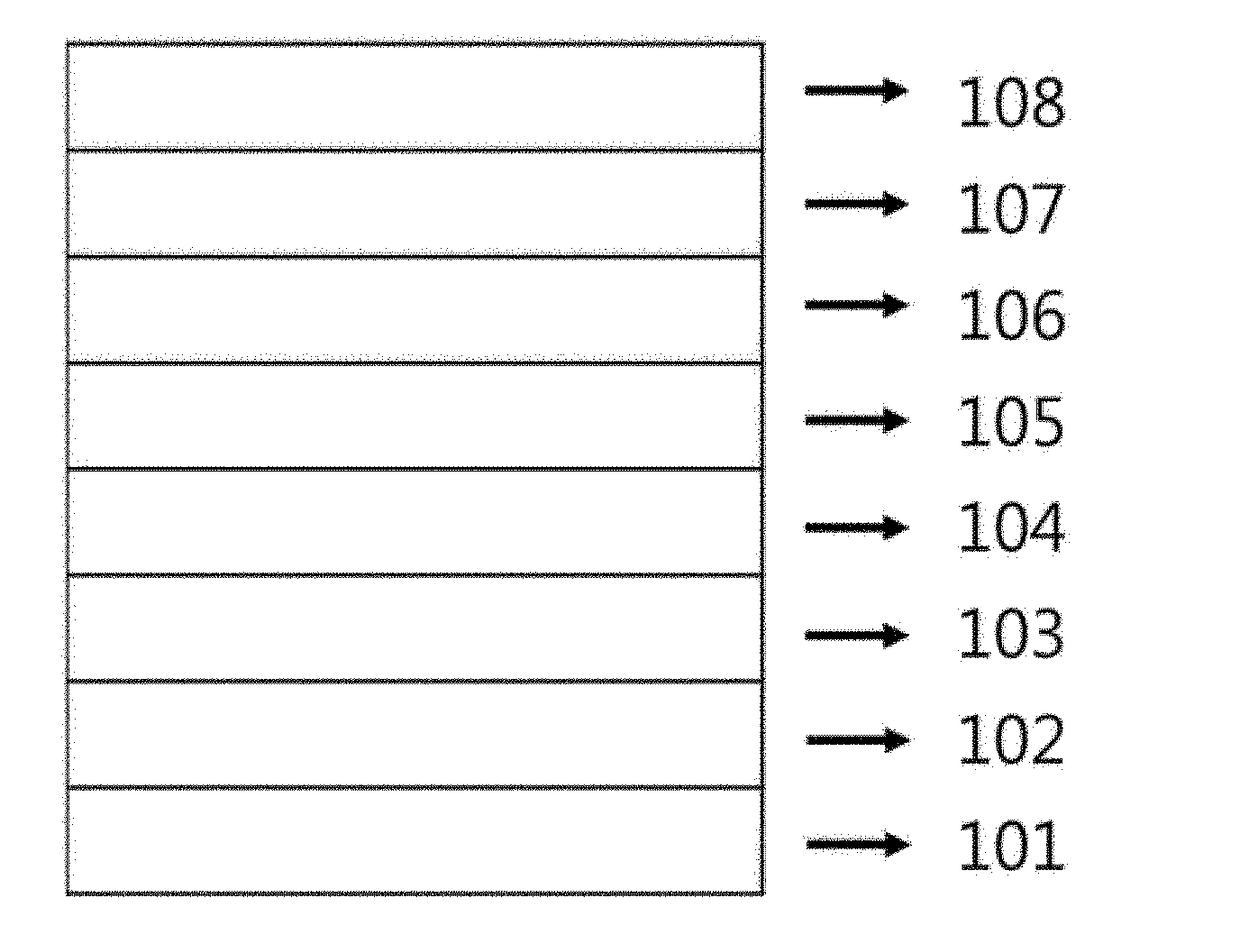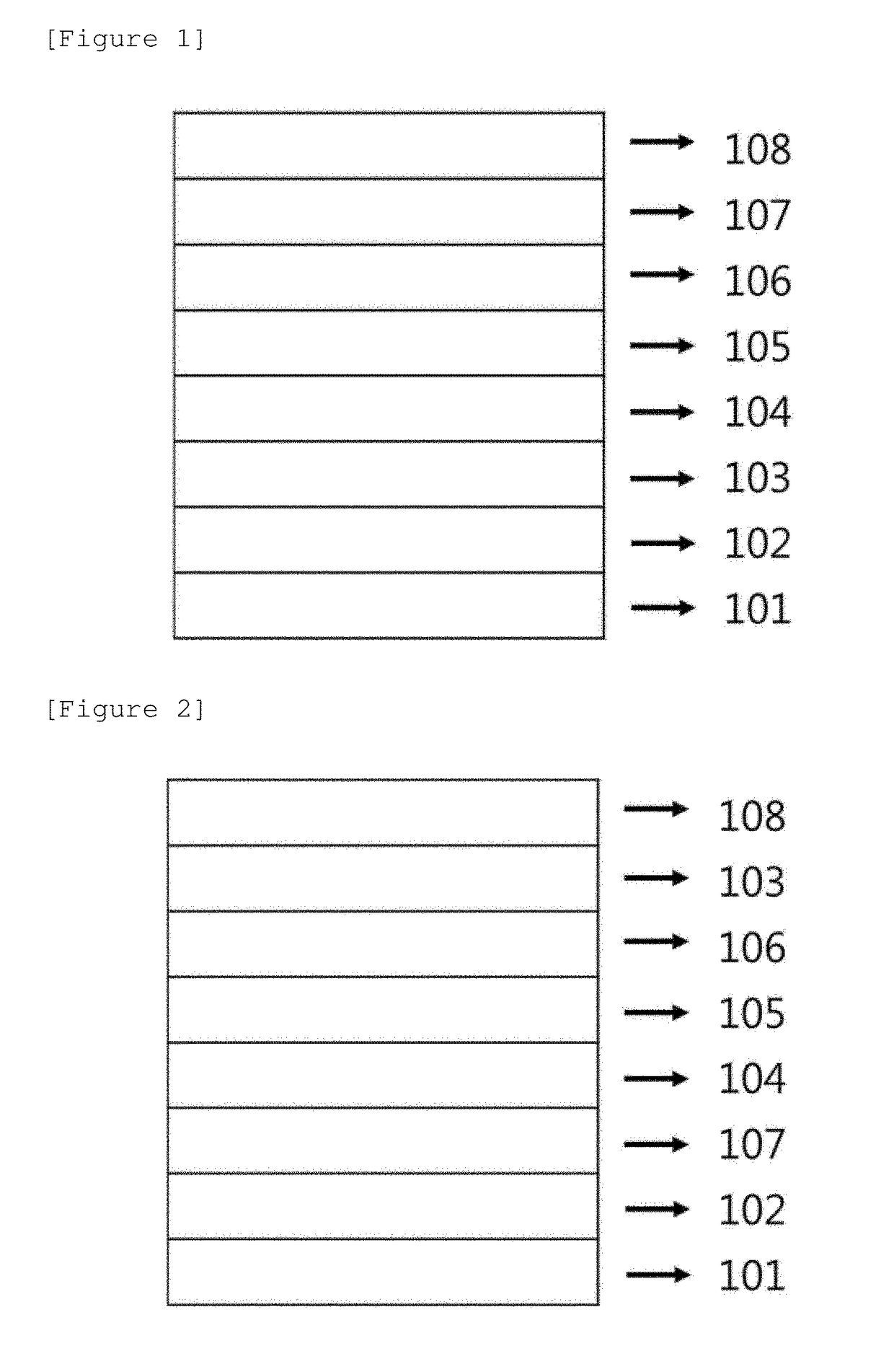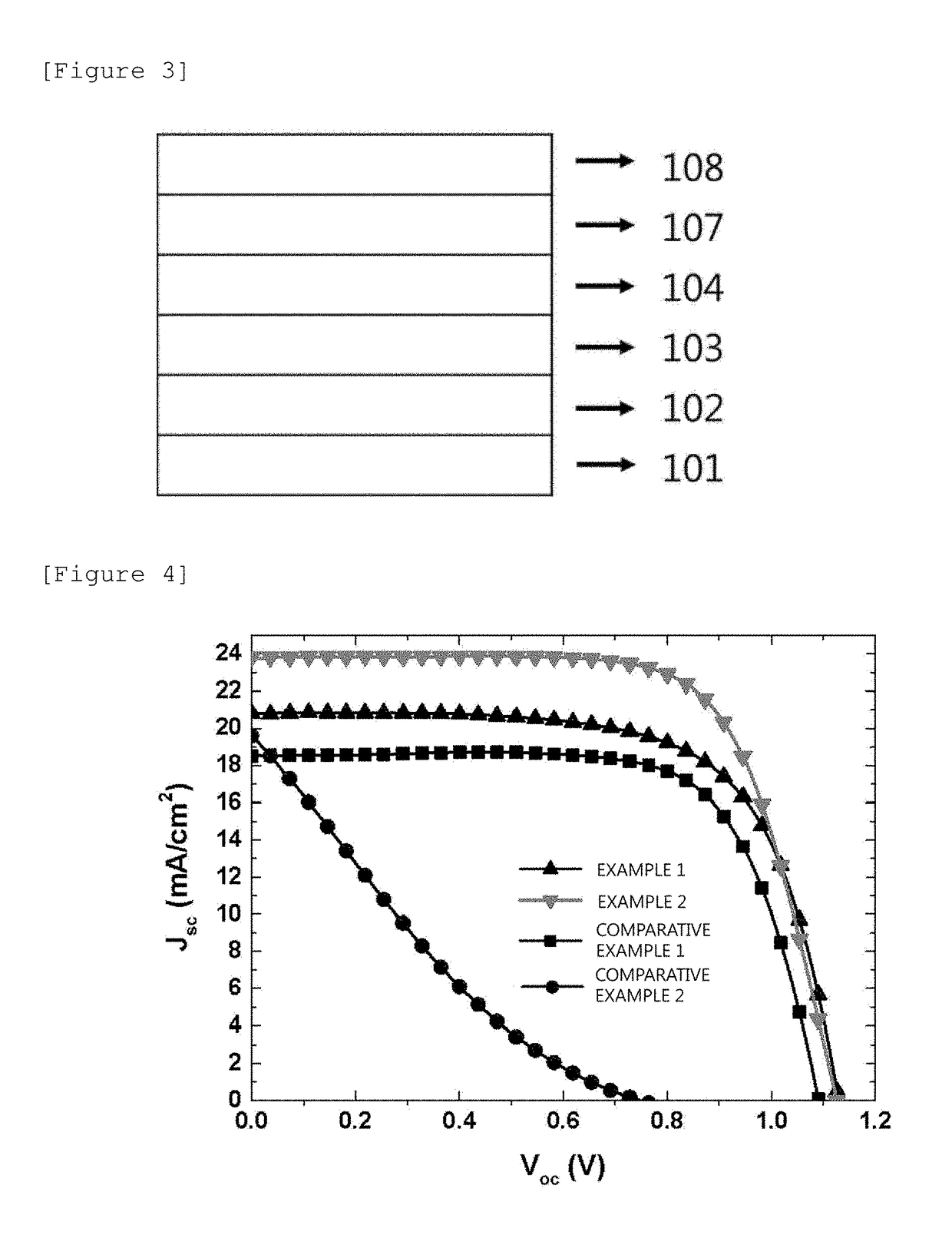Organic-inorganic hybrid solar cell
a solar cell and organic-inorganic technology, applied in the field of organic-inorganic hybrid solar cells, can solve the problems of low efficiency and stability, deterioration of stability, and change of properties, and achieve the effects of reducing the phenomenon of lattice spacing, improving interfacial characteristics, and enhancing device stability
- Summary
- Abstract
- Description
- Claims
- Application Information
AI Technical Summary
Benefits of technology
Problems solved by technology
Method used
Image
Examples
example 1
[0126]An organic substrate (40 Ω / sq) coated with indium tin oxide (ITO) was washed sequentially with acetone and isopropyl alcohol (IPA) for 1 hour, respectively, by using an ultrasonic cleaner. An ITO substrate coated with TiO2 (hereinafter, referred to as an electron transporting layer) was manufactured by repeating three times a procedure of spin-coating a solution including titanium dioxide (TiO2) on the ITO substrate, and heat treatment at 150° C. for 30 minutes.
[0127]A yellow solution formed by dissolving 1 mM of lead iodide (PbI2) (purity 99%, Sigma Aldrich Co., Ltd.) in 1 ml of dimethylformamide (DMF) was spin-coated on the electron transporting layer. Thereafter, a first light absorbing layer was formed by spin-coating a solution formed by dissolving 10 mg of CH3NH3I (MAI) in 1 ml of isopropyl alcohol thereon, and performing a heat treatment at 100° C. for 10 minutes.
[0128]Thereafter, a second light absorbing layer was formed by spin-coating 200 μl of a solution, which was ...
example 2
[0132]An organic-inorganic hybrid solar cell was manufactured in the same manner as in Example 1, except that in order to form the second light absorbing layer, 200 μl of a solution formed by mixing (HC(NH2)2)I and CH3NH3I at a molar ratio of 0.7:0.3 and then dissolving the mixture in 1 ml of isopropyl alcohol was spin-coated on the upper portion of the first light absorbing layer.
PUM
 Login to View More
Login to View More Abstract
Description
Claims
Application Information
 Login to View More
Login to View More - R&D
- Intellectual Property
- Life Sciences
- Materials
- Tech Scout
- Unparalleled Data Quality
- Higher Quality Content
- 60% Fewer Hallucinations
Browse by: Latest US Patents, China's latest patents, Technical Efficacy Thesaurus, Application Domain, Technology Topic, Popular Technical Reports.
© 2025 PatSnap. All rights reserved.Legal|Privacy policy|Modern Slavery Act Transparency Statement|Sitemap|About US| Contact US: help@patsnap.com



